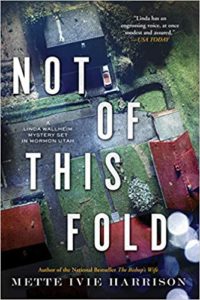 The contemporary mystery novel does most of its work at the nexus between cultural anthropology and intellectual puzzle. This is a pretty important nexus, as the two cognitive operations that it represents–understanding other people and solving difficult problems–are the two principal drivers of human evolution. These are, very literally, the two main reasons that our brains are so big.
The contemporary mystery novel does most of its work at the nexus between cultural anthropology and intellectual puzzle. This is a pretty important nexus, as the two cognitive operations that it represents–understanding other people and solving difficult problems–are the two principal drivers of human evolution. These are, very literally, the two main reasons that our brains are so big.
So it makes sense that mystery novels are, by a fairly wide margin, the most frequently read books in the United States. They simply do, better than any other kind of book, the sorts of things that we innately consider important.
Mormons have an “it’s complicated” relationship with the mystery novel. We have been there since the very beginning of the genre. The first modern series mystery, Arthur Conan Doyle’s A Study in Scarlet (1887) takes place partly in Utah and features Mormon characters as both the killer and the dead body. A Study in Scarlet was a good puzzle, and the cultural otherness of Mormons in the 19th century contributed to the puzzleness. But it was not good anthropology. It did not tell readers anything important or true about actual Mormons.
Mormon-themed mysteries throughout the 20th century followed the Conan-Doyle model, as I argued in this 1997 essay in Sunstone magazine. In the last two decades of the century, mystery writers produced dozens of novels about contemporary Mormons. And they all pretty much sucked. Some of them, like A Study in Scarlet, were good puzzles. But none of them treated Mormonism with any kind of nuance. Mormons remained–in these novels and in the minds of most readers–irredeemably other.
Enter Mette Ivie Harrison’s Linda Waldheim series in 2014. From the first installment, The Bishop’s Wife, these novels did something that nobody else had ever done: they treated Mormons, living in a predominantly Mormon community, like a group of actual people instead of as a set of stock characters or cultural allegories.
This does not mean that Harrison “got Mormonism right.” Rather, she demonstrates that there is no such thing as a single Mormonism that anybody can get wrong or right. She shows that Mormon communities are as diverse as any other group of human beings. There are good ones, bad ones, liberal ones, conservative ones, smart ones, stupid ones–the works. And she highlights the conflicts within the community in a way that lets outsiders see that we are a conflicted community.
The first three novels in the series are pretty good. They are all well worth reading. But the fourth novel, Not of this Fold, which was released this week, moves the needle up to Great. It is a notch above the others and an indicator that Harrison has hit her stride as a front-rank mystery novelist.
The main reason that this novel gets an extra star is that the puzzle is better. All of the novels portray Mormonism well, but not all of them feel like complete, well constructed intellectual puzzles. This one does. The murder is genuinely puzzling; the various motives and suspects roll out evenly through the narrative, with incremental revelations that both reveal and conceal other motives; and the end feels satisfying and complete. It does, in other words, all of the business of a good mystery novel apart from whatever anthropological tours it takes us on.
But the anthropology is also better in Not of This Fold. For one thing, Linda takes on a sidekick, Gwen Ferris, who stands somewhere between a surrogate daughter and an evil twin. Gwen is younger than Linda, angrier at the Church, more impulsive in her detecting methods, and less measured in her ecclesiastical criticisms. This allows Harrison to speak about Mormonism dialectically, with Gwen criticizing and Linda defending some of the Church’s doctrines and practices–with the author herself lurking (one suspects) somewhere in the middle.
Linda’s husband Kurt also plays a more active role in the detecting, and provides a very similar dialectic on the other side. Kurt is a true-believer with a rock-solid testimony of the Church and its leaders, but he is not a cartoon character. He makes good arguments too, and he is not always wrong.
Linda’s family rounds out different versions of Mormon culture: her son Samuel –an openly gay, faithful Latter-day Saint serving a full-time mission in Massachusetts–makes an appearance in a subplot. Sam and Kenneth–another of her sons who is a non-believer and has let the Church, yet still manages to live a moral and beautiful life–remind us that the larger Mormon culture is not constrained by any belief system.
And then there is the social question at the heart of the story: how do we treat those not of our fold? The murder victim in the story is an undocumented Mexican immigrant named Gabriela. Her story starts to get to some of the core tenets of the Gospel, of Christian Discipleship, and of what members of the Church of Jesus Christ of Latter-day Saints and other Mormons really mean when they say they follow Christ.
All of this is wrapped around a compelling intellectual puzzle and a portrayal of Mormons that will help those who aren’t Mormon see the diversity of our community and those who are Mormon–but aren’t Mormon in quite the same way that others are Mormon–understand each other better.
Come for the engaging intellectual puzzle and stay for the nuanced treatment of Mormonism. Or do it the other way around. But definitely come and stay. You won’t be sorry.

You rejoiced in a superb mystery novel. THANK YOU for writing a great review, Michael! May we have many more! (Both excellent novels and reviews!)